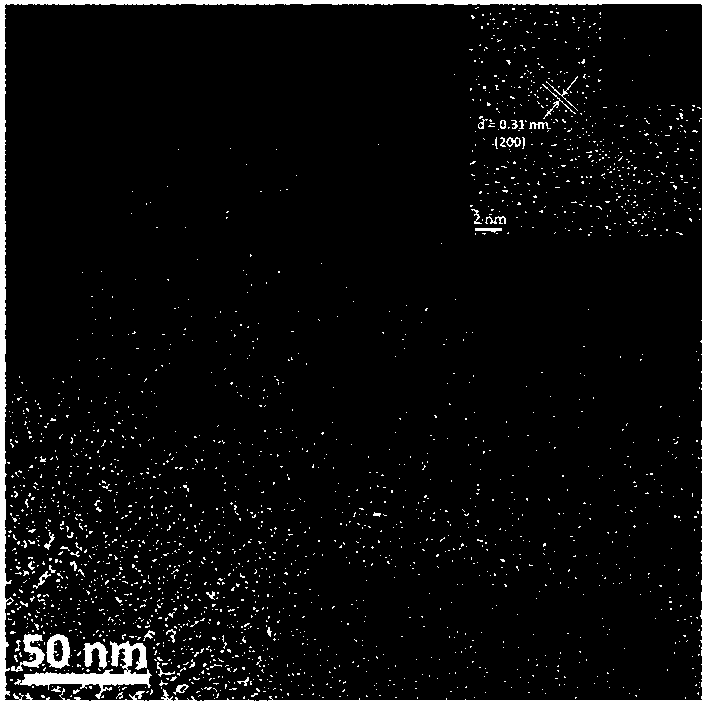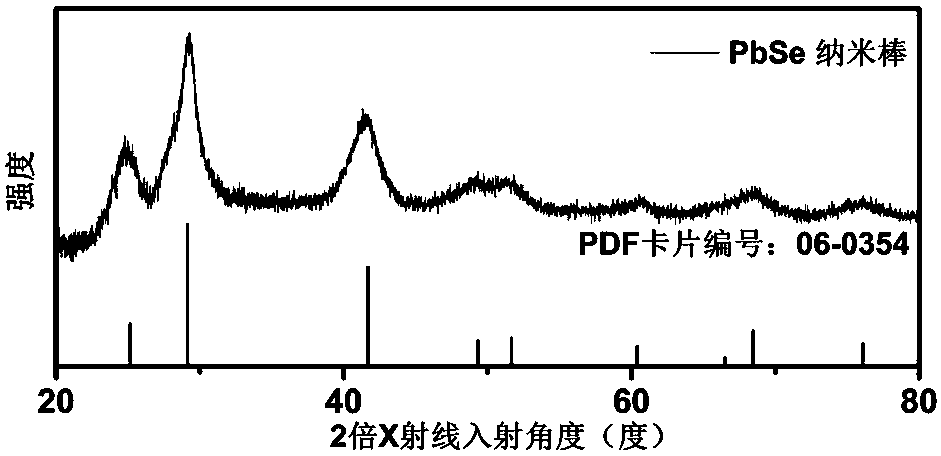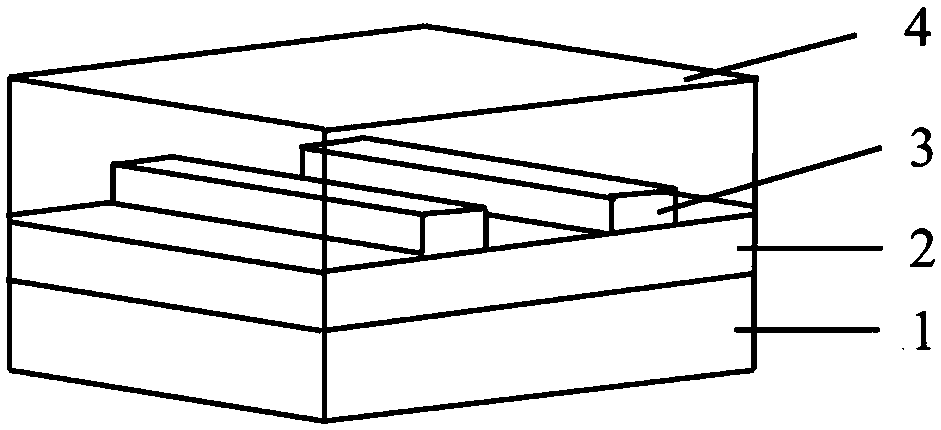Lead selenide nanorod, preparation method and application thereof in field effect transistor
A technology of nanorods and lead selenide, applied in nanotechnology, nanotechnology, binary selenium/tellurium compounds, etc., can solve the problem of difficulty in lead selenide nanorods, insufficient uniformity of size, and dissolution of lead selenide nanorods Insufficient solubility and other problems, to achieve good solubility, uniform size distribution, high performance
- Summary
- Abstract
- Description
- Claims
- Application Information
AI Technical Summary
Problems solved by technology
Method used
Image
Examples
Embodiment 1
[0037] In this example, the lead selenide nanorods were synthesized at a temperature of 100°C. The specific steps are as follows:
[0038] (1) Preparation of lead precursor: under the protection of nitrogen, add 89 mg (0.4 mmol) of lead oxide, 170 mg (1 mmol) of trans-2-decenoic acid and 8 g of octadecene into a 50 mL three-necked flask In the three-necked flask, stir for 1 hour at 120 ℃ until the solution becomes clear and transparent, and then vacuumize at 100 ℃ for 1 hour to remove the water and oxygen in the three-necked flask to obtain the lead precursor, which is ready for use;
[0039] (2) Reaction at preset temperature: Dissolve 20 μL of diphenylphosphine and 1.2 mL of selenium tris (diethylamino) phosphine solution (molar concentration of 1 mol / L) in 1.2 mL of octadecene and mix well Then use a syringe to quickly inject it into the above-mentioned lead precursor pre-adjusted to 100 ℃, and react for 10 minutes;
[0040] (3) Post-treatment: After cooling to room temperature w...
Embodiment 2
[0045] This embodiment provides a field effect transistor device based on lead selenide nanorods.
[0046] See attached image 3 , It is a schematic diagram of the structure of the lead selenide nanorod field effect transistor device provided in this embodiment. The field-effect transistor is a layered structure, from bottom to top including n-type doped silicon wafer 1, and silicon dioxide (SiO) attached to the n-type doped silicon wafer. 2 ) Layer 2, with SiO 2 The gold (Au) electrode layer 3 is bonded to each other, and the lead selenide nanorod layer 4 is bonded to the substrate.
[0047] The ultra-fine lead selenide nanorod field effect tube device provided in this embodiment is prepared by the following preparation method: in a highly purified environment, vapor deposition technology is used to deposit a certain thickness on the surface of the n-type doped silicon wafer 1 Silicon dioxide (SiO 2 ) Layer 2; using planar magnetron technology, sputtering gold (Au) electrode layer...
Embodiment 3
[0056] This embodiment provides a field effect transistor device based on lead selenide nanorods, and its structure is shown in Appendix image 3 . The deposited gold electrode layer and deposited SiO 2 After cleaning the n-type doped silicon wafers, spin-coated the PbSe nanorod n-hexane solution prepared in Example 1, and after ligand exchange, evaporate 80nm thick Cu to obtain.
[0057] In this embodiment, the concentration of the n-hexane solution of the lead selenide nanorods is 15-25mg / mL, preferably 20mg / mL, the rotation speed during spin coating is 1000-2000rpm, preferably 1000rpm, and the duration is 15-30s, preferably 30s, Spin coating 3 layers.
[0058] In this embodiment, the ligand exchange reagent is tetra-n-butyl ammonium iodide (the ligand is also tetra-n-butyl ammonium bromide or tetra-n-butyl ammonium chloride) dissolved in anhydrous methanol with a concentration of 25 to 35 mM, preferably 30 mM, ligand exchange 20-40 s, preferably 30 s.
[0059] The performance in...
PUM
| Property | Measurement | Unit |
|---|---|---|
| diameter | aaaaa | aaaaa |
| length | aaaaa | aaaaa |
Abstract
Description
Claims
Application Information
 Login to View More
Login to View More - R&D
- Intellectual Property
- Life Sciences
- Materials
- Tech Scout
- Unparalleled Data Quality
- Higher Quality Content
- 60% Fewer Hallucinations
Browse by: Latest US Patents, China's latest patents, Technical Efficacy Thesaurus, Application Domain, Technology Topic, Popular Technical Reports.
© 2025 PatSnap. All rights reserved.Legal|Privacy policy|Modern Slavery Act Transparency Statement|Sitemap|About US| Contact US: help@patsnap.com



